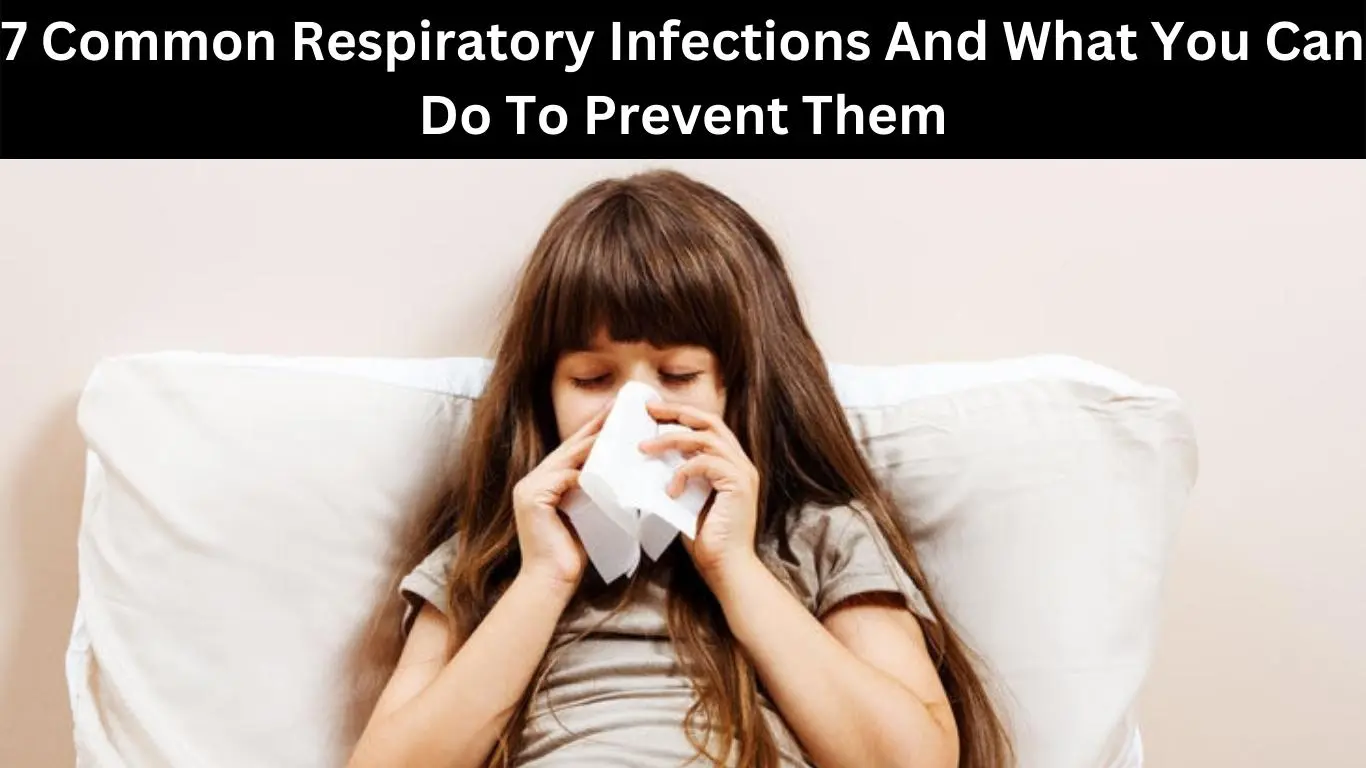Respiratory tract infections affect the part of the body responsible for breathing, also known as the respiratory system. These infections may affect your throat, nose, sinuses, lungs, or airways. There are two types of respiratory infections that you might experience, including upper respiratory infections and lower respiratory infections. Upper respiratory infections are contagious infections that affect the upper part of your respiratory system, including the nose, sinuses, and throat. Meanwhile, lower respiratory infections can be found in your lungs or breathing airways. Today we will take a closer look at seven common respiratory infections of both types, along with what actions you can take to prevent them. However, remember that you should always consult your doctor before implementing new treatments.
Bronchitis
Bronchitis is an infection, which affects the main airways of the lungs, which causes them to become inflamed or irritated. The main symptoms that you might encounter are a cough, along with yellow-grey mucus. It may also cause fatigue, wheezing, sore throat, tightness or dull pain in the chest, or shortness of breath. Although most cases of bronchitis can be treated at home with rest, you should see your GP, if your symptoms are severe or unusual. To reduce your risk of bronchitis, it’s important to wash your hands regularly, avoid cigarette smoke, and get vaccinated.
Pneumonia
Pneumonia is a lung infection, that inflames the air sacs in one or both lungs. General symptoms include cough, fever, chest pain, and difficulty breathing. You can find out more about pneumonia here so that you know what to expect and when it is best to see a doctor. In addition, you will learn more about how pneumonia is diagnosed and how to treat it effectively. This will help you tell the difference between pneumonia and other respiratory infections that you may experience. Also, pneumonia may occur together with bronchitis, which is known as bronchopneumonia.
Chest Infection
Chest infections are infections of the lungs or large airways, which can sometimes occur after having a cold or flu. Common symptoms include a chesty cough, which may involve coughing up green or yellow mucus. Also, you may experience shortness of breath, chest pain or discomfort, a headache, aching muscles, and tiredness. While these symptoms can be unpleasant, they typically get better on their own in about 7 to 10 days. If you have a chest infection, be sure to get plenty of rest, drink lots of water, use painkillers, and try to stay at home. You can also receive treatment from a GP, but that will depend on the cause of your chest infection.
Flu
Influenza, or the flu, isn’t usually viewed as only an upper respiratory infection, as it is systemic and it affects more than one system in the body. Typically, it affects both the upper and lower respiratory system. It comes with symptoms, such as a high temperature and achiness, in addition to a sore throat and a cough. As a result, this is a serious illness that affects millions of people every year, spreading from October through to May. If you think you may have the flu, you should see your healthcare provider as soon as possible. You can also take steps to prevent the flu by getting the flu vaccine.
Pharyngitis
Pharyngitis is usually caused by a virus and is known as a sore throat. Symptoms of pharyngitis include severe throat pain, difficulty swallowing and speaking, ear pain, tender lymph in the neck, and swollen, red tonsils. Keep in mind that your healthcare provider might want to do a throat swab to determine if this is a bacterial infection. If the test comes back positive, you will need to take a course of antibiotics like penicillin. However, if the test is negative, you may be recommended to use over-the-counter pain relievers, and gargle with warm water.
Laryngitis
Your larynx is your voice box, which means that laryngitis occurs when the larynx becomes inflamed. Typically, a virus can affect the upper airways, resulting in laryngitis. The most common symptom you will notice is a voice change. For example, you may become very hoarse, only be able to speak at a low volume, or may even lose your voice entirely. To treat laryngitis, rest your voice, drink plenty of extra fluids, and use cough suppressants. You can prevent laryngitis if you stop smoking or stay away from second-hand smoke, limit alcohol, and eat a variety of healthy foods.
Sinusitis
Sinus infections or sinusitis is a common issue, which happens when the sinuses become inflamed. Sinuses are hollow spaces that can be found behind the bones of your face, such as in your cheeks, behind your forehead, and on the sides of your nose bridge. Viruses can affect the sinuses, causing inflammation. As a result, you may feel or have postnasal drip, green mucus from your nose, stuffiness, bad breath, cough, and fatigue. To prevent sinusitis, drink lots of water, avoid dry environments, sleep with your head elevated, and be careful with decongestants.
